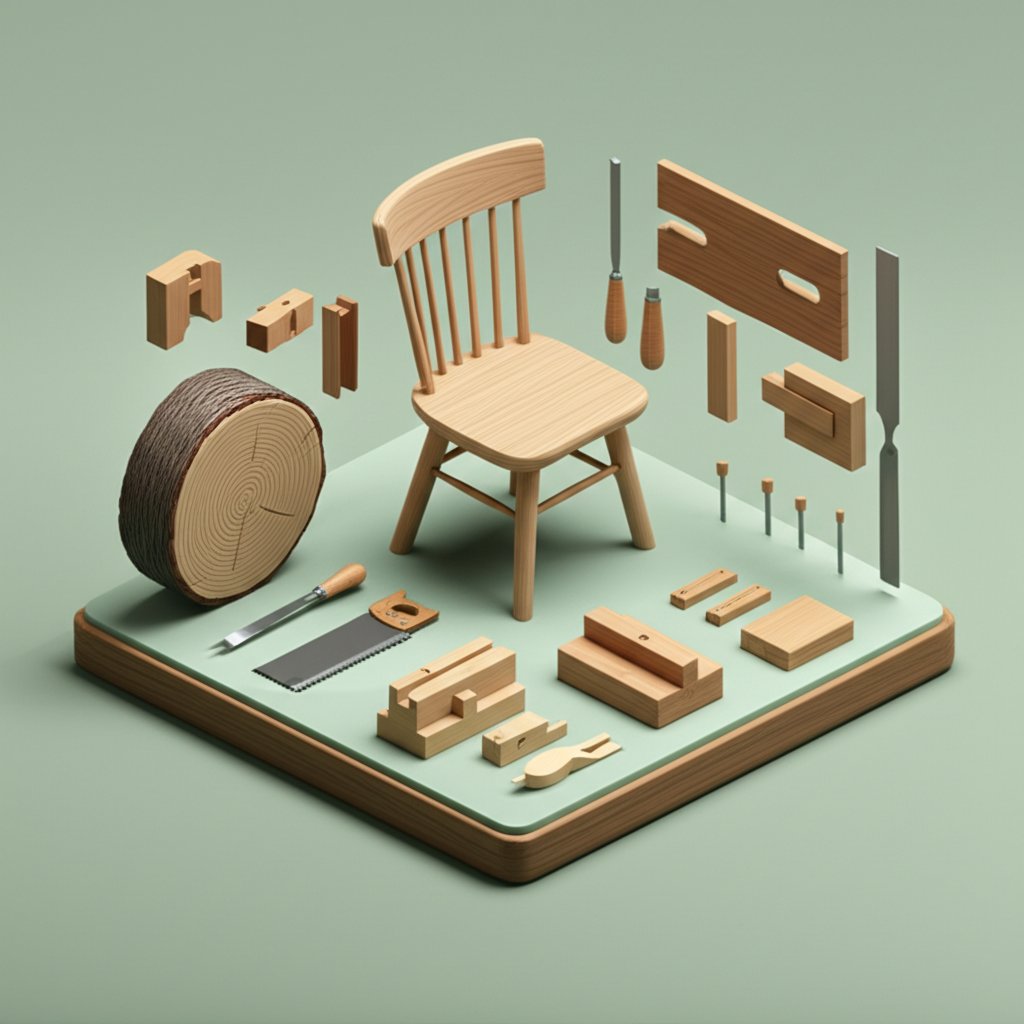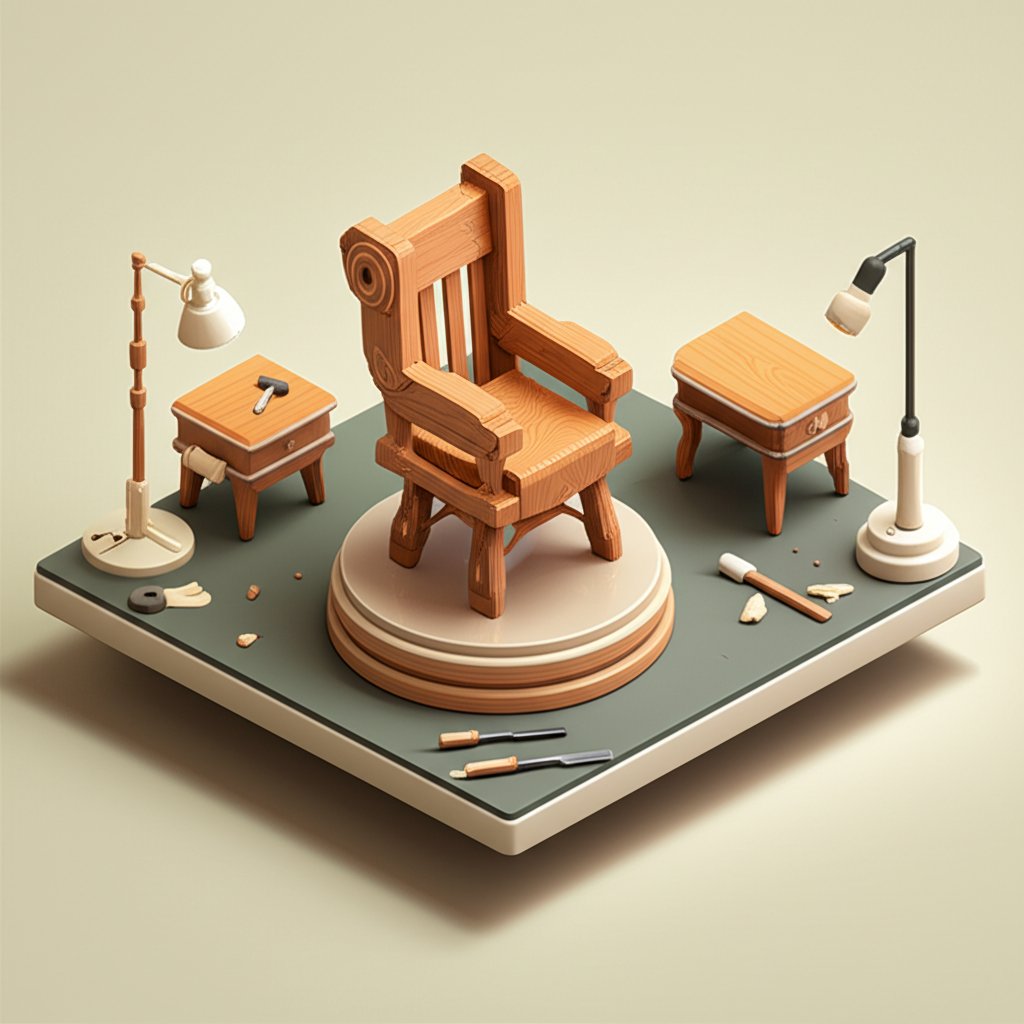Step into a world where history, artistry, and nature intertwine to create everyday marvels. We’re talking about wood furniture – those enduring pieces that add warmth, character, and functionality to our lives. But beyond their aesthetic appeal, lies a treasure trove of fascinating facts about wood furniture that will forever change how you view your favorite wooden table or chair. Prepare to be astounded as we unveil the secrets, the science, and the stories behind this timeless material. From ancient design innovations to the intricate dance of furniture craftsmanship and the evolution of wood furniture design, this article promises to equip you with awe-inspiring knowledge that will make you a true connoisseur. Get ready to discover the jaw-dropping truths that make wood furniture truly extraordinary!
The Unrivaled Durability and Timeless Legacy of Wood Furniture
When we talk about longevity, few materials can rival the inherent strength and resilience of wood. This natural marvel has allowed wood furniture to transcend generations, carrying stories and history within its very fibers.
Fact 1: Ancient Enduring Legacies – Wood Furniture Truly Lasts for Millennia
It’s not just a saying; wood furniture truly can last for centuries, even millennia, under favorable conditions. Archaeological excavations have unearthed wooden artifacts, including furniture pieces, dating back thousands of years. For instance, the furniture found in Egyptian pharaohs’ tombs, crafted from cedar and ebony, remains remarkably preserved, offering a direct glimpse into ancient wood furniture design and daily life. This incredible durability is one of the most compelling facts about wood furniture, demonstrating its enduring value far beyond its initial purpose. Imagine a chair or chest that has witnessed empires rise and fall, a testament to the material’s inherent strength and the meticulous care of its original furniture craftsmanship.
Fact 2: The Living, Breathing Material – How Wood Adapts and Endures
One of the most profound wood furniture facts is that wood is a hygroscopic material, meaning it constantly exchanges moisture with its environment. This “breathing” characteristic allows it to adapt and remain stable, provided it’s not subjected to extreme, rapid changes. A tree never truly dies of “old age” in the way humans do; rather, factors like disease, lightning, or environmental shifts bring about its end. The wood harvested from these trees retains a semblance of that vitality, subtly expanding and contracting, a silent testament to its organic origins. Understanding this helps appreciate why proper care, like maintaining consistent humidity, is crucial for preserving the integrity and longevity of your beloved wood furniture.
A Symphony of Senses: The Unique Characteristics of Wood
Beyond its robust nature, wood engages our senses in ways few other materials can. Its appearance, texture, and even its scent contribute to its profound appeal in wood furniture design.
Fact 3: A Canvas of Natural Art – The Unique “Fingerprint” of Every Piece
Every single piece of wood furniture boasts a unique grain pattern, like a natural fingerprint. The individual growth rings, knots, and mineral streaks tell the story of the tree’s life – the seasons it endured, the nutrients it absorbed, and the challenges it overcame. This visual diversity is why no two oak tables or cherry cabinets are ever precisely alike, making each item of wood furniture a singular work of art. From the dramatic, swirling patterns of burled wood to the linear elegance of straight-grained maple, the variety of natural aesthetics available for wood furniture design is truly endless, catering to every style and preference. These intricate details are a hallmark of bespoke furniture craftsmanship.
Fact 4: The Breath of the Forest – The Delightful Aroma of Wood
One of the often-overlooked yet deeply satisfying facts about wood furniture is its distinct, often delightful, aroma. Walk into a room furnished with cedar, and you’re greeted by a rich, earthy scent known for its moth-repellent properties. Cherry wood offers a sweet, fruit-like fragrance, while pine carries the crisp, invigorating scent of a forest. These natural essential oils within the wood fibers contribute an additional sensory layer to your living space, creating an atmosphere that is both inviting and uniquely organic. This olfactory signature, a subtle reminder of the wood’s origin, enhances the overall experience of living among wood furniture.
Fact 5: Global Timbers, Global Styles – The Extraordinary Diversity of Wood Types
The world of wood furniture is incredibly diverse, thanks to the vast array of tree species, each possessing unique properties that dictate its use in wood furniture design and construction. From the extreme hardness and rich, dark tones of exotic woods like Wenge or Brazilian Walnut, prized for modern furniture craftsmanship, to the classic strength of American Oak or the creamy elegance of Maple, each wood type offers specific advantages. Some are dense and resistant to dents, perfect for high-traffic surfaces. Others are softer and more malleable, suited for intricate carvings. Understanding this spectrum of over 60,000 known tree species, each with potential applications in furniture, is key to appreciating the depth of wood furniture facts.
Historical Echoes: Wood Furniture Facts and Social Evolution
For centuries, wood furniture has served not just as functional items, but as powerful symbols of status, innovation, and societal change. Its history mirrors the very evolution of human civilization.
Fact 6: Royal Ranks and Elevated Seats – The Ancient Symbolism of Chairs
Delving into ancient wood furniture facts, we discover that in societies like Ancient Egypt, chairs were anything but common. They were exclusive luxuries, reserved almost entirely for the elite: pharaohs, nobility, and high-ranking officials. The height of a chair’s legs was a direct indicator of social standing, with the most powerful individuals literally “looking down” from their elevated wooden thrones. This wasn’t merely about comfort; it was a potent visual declaration of authority and status, reflecting the advanced furniture craftsmanship capable of creating such elaborate pieces. The widespread use of chairs we see today is a relatively recent phenomenon, a testament to how far wood furniture design has progressed from ancient times.
Fact 7: The Birth of Flat-Pack Genius – A Trunk, a Table, and a Revolution
One of the most revolutionary innovations in modern wood furniture design arose from a simple problem in the 1950s. Gillis Lundgren, a draughtsman for IKEA, needed to fit a large wooden table into the small boot of his car. His ingenious solution—removing the table’s legs—sparked the concept of flat-pack furniture. This wasn’t just about convenience; it fundamentally transformed the furniture industry. By making assembly easier and transport more efficient, flat-pack wood furniture became accessible to millions, democratizing home décor. This single act of practical furniture craftsmanship and design thinking forever changed how we buy, transport, and assemble our furniture, becoming a significant entry in modern wood furniture facts.
The Art and Evolution of Furniture Craftsmanship

The creation of wood furniture is an art form, a delicate balance between material, skill, and creative vision. The journey from raw timber to a finished piece highlights centuries of evolving techniques.
Delving into the realm of creation, understanding the artistry behind furniture craftsmanship further enhances appreciation for these enduring pieces, showcasing skills discussed in more detail at facts about furniture making.
Fact 8: From Hand-Hewn to High-Tech – The Evolution of Furniture Craftsmanship
For millennia, furniture craftsmanship was an incredibly laborious, hands-on process. Every joint was meticulously cut by hand, every surface planed, every detail carved using traditional tools. The advent of the Industrial Revolution, particularly over the last two centuries, brought about a seismic shift. Sawmills, powered machinery, and assembly lines drastically sped up production and reduced costs. This evolution didn’t diminish the value of hand-crafted wood furniture; instead, it created a dual landscape where bespoke artisans continue their detailed, custom work, while mass manufacturing makes quality wood furniture accessible to a wider audience. This journey of innovation is a crucial part of facts about wood furniture, showcasing human ingenuity.
Fact 9: Wood as a Masterpiece Medium – The Artistic Journey Through Ages
Wood has always been more than just a building block; it’s been a profound medium for artistic expression across cultures and throughout history. From the intricate carvings adorning Gothic cathedrals and Japanese temples to the elaborate Rococo furniture of 18th-century France, wood furniture and woodworking have consistently been at the forefront of artistic and architectural movements. Master woodworkers are not just carpenters; they are sculptors, designers, and engineers, transforming raw timber into breathtaking works of art that speak volumes about their era’s aesthetics and furniture craftsmanship. Every piece of high-quality wood furniture design holds a story of artistic vision.
Beyond Aesthetics: The Science and Sustainability Behind Wood Furniture Design

In an era of increasing environmental consciousness, the choice of materials matters more than ever. Wood furniture stands out not only for its beauty but also for its surprisingly sustainable footprint.
Fact 10: The Ultimate Carbon Sink – Wood’s Eco-Friendly Advantage
One of the most compelling modern facts about wood furniture relates to its environmental impact. Wood, as a natural resource, is inherently renewable, especially when sourced from sustainably managed forests. As trees grow, they absorb carbon dioxide from the atmosphere, storing it within their wood fibers. When that wood is crafted into furniture, that carbon remains sequestered for the lifespan of the piece – which, as we’ve learned, can be centuries! Choosing durable wood furniture over short-lived alternatives is a conscious step towards reducing your carbon footprint, making it an eco-friendlier choice for responsible wood furniture design and consumption. This fact underscores wood’s role in a circular economy.
Conclusion: The Enduring Allure of Wood Furniture
From the ancient, majestic halls of pharaohs to the cozy comfort of our modern homes, wood furniture has woven itself into the fabric of human existence. These 10 jaw-dropping wood furniture facts reveal a material that is not only robust and beautiful but also rich in history, innovation, and sensory delight. Understanding the intricate furniture craftsmanship, the evolution of wood furniture design, and the fundamental nature of wood itself allows us to appreciate each piece with a deeper sense of connection and wonder.
The next time you run your hand across a smooth wooden surface or admire a finely jointed cabinet, take a moment to reflect on the incredible journey and inherent marvels encapsulated within that single piece. Wood furniture isn’t just an object; it’s a legacy, a work of art, and a testament to the enduring beauty of the natural world. Embrace the stories, celebrate the craftsmanship, and truly know the wood around you.
FAQ: Your Top Questions About Wood Furniture Answered
Q1: How long can high-quality wood furniture truly last?
A: High-quality wood furniture, especially when cared for properly and stored under stable conditions, can last for many centuries. There are numerous examples of ancient wooden pieces that have survived for thousands of years, demonstrating its incredible longevity.
Q2: What are the key factors contributing to the durability of wood furniture?
A: The durability of wood furniture comes from its inherent cellular structure, density, and natural resistance to decay in stable environments. Proper furniture craftsmanship, using strong joinery techniques and appropriate finishes, also significantly enhances its lifespan.
Q3: Do all types of wood used in furniture have a distinct scent?
A: Most wood species possess an aromatic fragrance, though the intensity and type of scent vary widely. Cedar is known for its strong, distinct aroma, while cherry or pine offers sweeter notes. These natural scents contribute to the sensory appeal of wood furniture.
Q4: How does furniture craftsmanship impact the quality of a wooden piece?
A: Furniture craftsmanship is paramount. Skilled artisans use techniques like dovetail or mortise-and-tenon joints, which are significantly stronger and more durable than screws or nails alone. Superior craftsmanship ensures the piece is structurally sound, aesthetically pleasing, and built to last.
Q5: What is flat-pack furniture, and how did it influence wood furniture design?
A: Flat-pack furniture refers to items designed to be assembled by the consumer, often arriving in a compact, flat package. It was popularized by IKEA’s Gillis Lundgren in the 1950s. This innovation revolutionized wood furniture design by making pieces easier and more affordable to transport and accessible to a global market.
Q6: What does it mean for wood to be a “living material”?
A: Wood is hygroscopic, meaning it absorbs and releases moisture, making it a “living” material that responds to its environment. This characteristic means wood can expand and contract with changes in humidity. Understanding this helps in caring for wood furniture to prevent warping or cracking.
Q7: Are there sustainable options when choosing wood furniture?
A: Absolutely. Choosing wood furniture from sustainably managed forests (often indicated by certifications like FSC – Forest Stewardship Council) is an eco-friendly choice. Wood is a renewable resource that sequesters carbon, making it a sustainable option when harvested responsibly.
Q8: How has wood furniture design evolved over history?
A: Wood furniture design has evolved dramatically, reflecting changing social customs, technological advancements, and artistic movements. From the symbolic, elevated chairs of ancient Egypt to the decorative styles of the Baroque and Rococo periods, and then to the practical and minimalist approaches of modern design, wood has been at the center of innovation and aesthetics.









